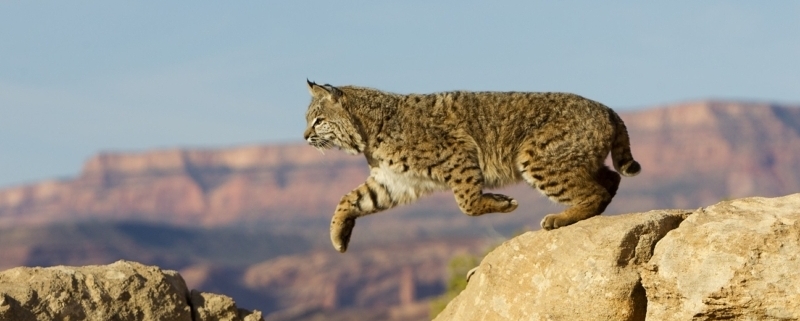Stop Making Conservation Complicated. Just Do It.
We all know the power of Nike’s “Just Do It” slogan. It’s simple, direct and inspiring. This campaign has been around since 1988 and “Just Do It” is now a part of our lexicon as a call to action to get things done. Its use is not limited to athletes and fitness professionals, but applicable to every challenge, however large or small, immediate or distant. It could be effective as a call to action for our planet and the restoration actions we need to take, but in the hands of the conservation community, Nike’s call to action would become, “Just Do It, but only once you’re 100% satisfied that “It” is evidence-based, that to “do” it is complex and expensive, and that having eventually done it, indicators and metrics are available to prove that it was worthwhile in the first place.” Hardly an inspiration.
Recent examples of how the conservation world engages in complexification and reinvention of the wheel include: a half-million-dollar grant to an NGO to study the value of wetlands to migratory bird species; the creation of yet another corporate collaboration to place value on ecosystems; and the launch of one more mapping platform to encourage alignments of local conservation programs. It can seem we are spending more time and money on redundant planning and frameworks instead of implementing and just doing it.
Every day, a football field-sized area of wetlands vanishes in Louisiana. Every year, 50,000 square miles of forest are lost across the planet, and extinction permanently removes species from the world at a rate over 1,000 times that of the natural rate of extinction. Yet, we still study, we still research, we still create initiatives, collaborations and cooperatives. We have to ask ourselves, are we studying nature to death? Are we collaborating toward system collapse? Are we funding inertia over action? Are we making it more complicated than it needs to be? In an era with limited resources and limited time, are we not better off just doing it?
In the world of corporate conservation, we’ve seen, time and again, companies becoming paralyzed between research and implementation, science and management, corporate cares and operational requirements, and most importantly, between the proposed cost and the actual budget. We’ve seen programs fail to launch because of this paralysis, and have identified why and propose here, some solutions to overcome this reluctance to action.
What stops companies from just doing it:
The corporate echo chamber. Corporate sustainability roads are well-traveled, with sustainability professionals and the consultants that advise them grouping and regrouping at a small number of big conferences where success stories are shared in the language of the community of practice using performance indicators and outcome metrics. Through this sharing, a sense of conservation as theory and numbers is developed, while the action itself is often overlooked. Across the company the story is told the same way, creating a distance between operations, where the work happens, and communications, where the work gets polished and packaged for external consumption.
The gravitational pull of the big greens. Large organizations want to work with other large organizations, and in the corporate, conservation NGO and academic communities these collaborations come with large price tags that create an expectation of a sophisticated work product that outlines complex approaches to biodiversity assessment and protection but falls short at implementation. On more than one occasion, WHC has been commissioned to “translate” such products into actions that consider the real-world operating environment as well as the larger conservation context.
The resource needs of the small greens. A common stressor on small- to mid-sized NGOs is tight financial resources, driven in part by a government and philanthropic funding model that requires these groups to work with razor-thin overhead costs. These groups see potential corporate partnerships as a solution to this stress and present over-complicated, expensive proposals for work, which, having been formulated with the corporate budget in mind, fall apart once the operations budget at the site is considered. All too often WHC hears from its members about outlandish project estimates from local NGOs that result in no action being taken and trust being eroded between potential partners.
A perceived absence of knowledge. Within the conservation sciences, as within many academic disciplines there can be a tendency to forget or ignore common knowledge which leads to a sense that only the experts can plant a pollinator meadow and that only the certified and qualified can lead a reforestation project. This misperception then creates budgetary and other issues that can place a project that could be easily designed and implemented by existing resources into indefinite limbo.
But, these barriers to action can be overcome.
We need to just do it.
Corporate sustainability officers – recognize with your fellow travelers the echo chamber that you’re in, and don’t forget that people and programs tell a far better story than charts and slides.
Big green groups – continue relationships with corporate leaders. You’re driving change, but please consider setting aside a minimum of 20 percent of the program budget for implementation. If you’re going to spend $1 million to do a study with the result that you will advise a company to plant trees, set aside $200,000 to plant the trees. Philanthropic foundations should consider the same.
Small green groups – consider whether your relationship with the company is about conservation or currency. If it’s truly about conservation, be prepared for the appropriate budget. However, if what you really want is a charitable contribution to support your organization, seek it from the corporate level, not from the site.
Finally, for those at the site level who think their knowledge is not adequate to implement a conservation program on their lands, think again. There are multiple sources of information like WHC Project Guidances to help you build a strong conservation project. Remember, one of the most meaningful things you can do is to plant the right thing in the right place at the right time.
Just do it.

